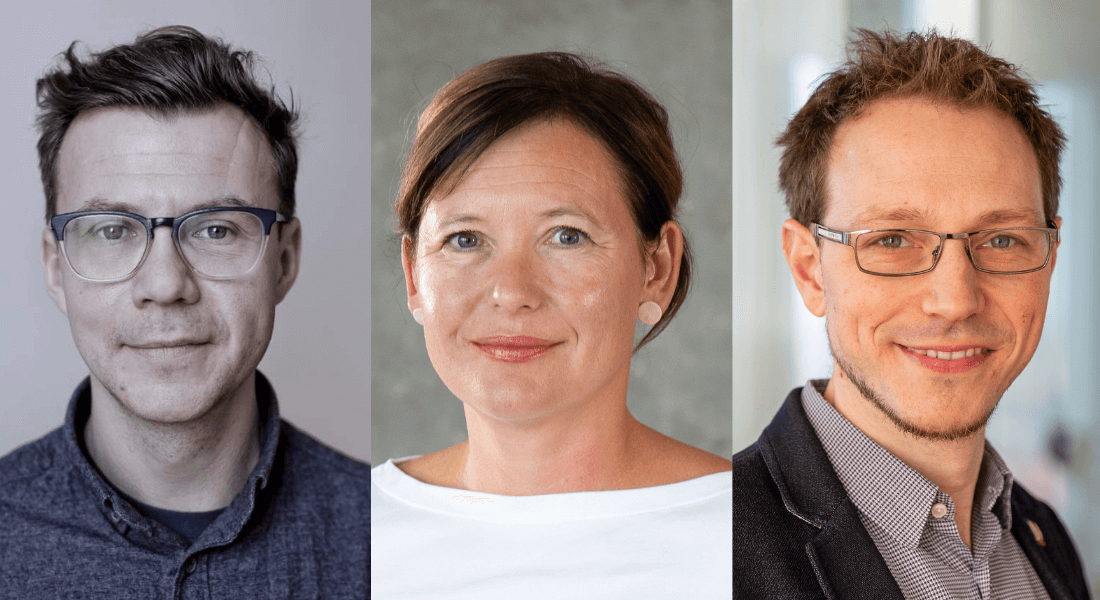Three SUND researchers receive ERC grants for groundbreaking research
The Consolidator Grant is given to three experienced researchers from SUND for projects examining childhood adversities and inequality, tissue development and novel RNA modifications.

The European Research Council has awarded the ERC Consolidator Grant to three researchers from SUND: Professor Naja Hulvej Rod from the Department of Public Health, Associate Professor Jakub Sedzinski from the Novo Nordisk Foundation Center for Stem Cell Medicine (reNEW), and Associate Professor Troels K. H. Scheel from the Department of Immunology and Microbiology.
The ERC Consolidator Grants aim to strengthen outstanding research and are targeted towards experienced researchers who are in the process of consolidating their research teams and careers.
The receivers of the grant all receive up to two million euro for a period of five years to fund groundbreaking research in their fields.
Professor Naja Hulvej Rod has received the grant for a project called “The Multiple LAYERS of Childhood Adversity” pivoting around how childhood adversities affect the health throughout life.
Multiple forms of adversity intersect with each other, and disadvantaged children are often exposed to adversity across multiple biological, health, social, neighbourhood and environmental layers, but the childhood adversity literature has almost exclusively focused on social adversity.
With LAYERS, Naja Hulvej Rod will create a unified data infrastructure for life course analyses of multiple layers of childhood adversity in 2M people over three generations using an innovative combination of data and methods within a complex systems framework.
To translate these insights into actionable public health, LAYERS will establish a real-world policy data lab which integrates evidence from nationwide policies and simulations.
Ultimately, Naja Hulvej Rod’s research aims to help break the vicious circles of adversity by identifying children and families who would benefit from targeted support.
More about Naja Hulvej Rods research here.
Associate Professor Jakub Sedzinski from the Novo Nordisk Foundation Center for Stem Cell Medicine (reNEW) goes even further back and examines how life is created in the first place.
With his project “Morphogenesis meets Cell Fate: Dissecting how Mechanical Forces coordinate Development” Jakub Sedzinski examines how basic cells develop into complex tissues and organs.
There are two main processes involved in this process: one that sculpts cells into specific shapes and structures (called morphogenesis), and another that assigns specific roles or identities to cells (cell fate acquisition). The connection between these two processes is not fully understood.
Therefore, Jakub Sedzinski will focus on studying a specific part of frog embryos to figure out how mechanical forces, like physical pushing and pulling, influence both the shaping of tissues and the identity of cells.
The goal is to create a model using advanced methods from biology, biophysics, and data science that can predict how cells will behave and what roles they will take on.
This knowledge could have important implications for understanding tissue and organ development and potentially new insights regarding regenerative medicine, birth defects and developmental disorders as well as cancer research and treatment.
More about Jakub Sedzinskis research here.
From basic tissue development to how dangerous viruses shield themselves from our immune system. Associate Professor Troels Scheel received the ERC Consolidator Grant for his project “Non-canonical modification of viral RNA (MOVIRNA)“.
His research focuses on how viruses, like the ones responsible for diseases such as COVID-19, interact with the host cells at the level of their genetic material, specifically RNA.
Viruses have developed sophisticated strategies to protect their RNA, such as adding caps and modifying the internal parts of the RNA.
The researchers have observed a novel and unique cap type, involving a cellular metabolite called flavin adenine dinucleotide (FAD), on the RNA of the hepatitis C virus. This is the first time a virus – or any RNA molecule – has been found to use this kind of cap to protect its RNA. The first part of the research will investigate the functional role of these novel caps for hepatitis C virus and their presence across other viruses.
The second part of the research will focus on internal modification of the viral RNA. The goal is to map the extent and understand how modifications at the beginning (caps) and within viral RNA molecules each contribute to evasion of detection by the immune system.
This knowledge could reveal new insights into how viruses replicate and affect the host's cells and may lead to the identification of new targets for developing therapies.
Read more about Troels K. H. Scheels research here.
Contact
Professor Naja Hulvej Rod
nahuro@sund.ku.dk
Phone: +4535326735
Associate Professor Jakub Sedzinski
jakub.sedzinski@sund.ku.dk
Associate Professor Troels Scheel
tscheel@sund.ku.dk
Phone: +4525122771
